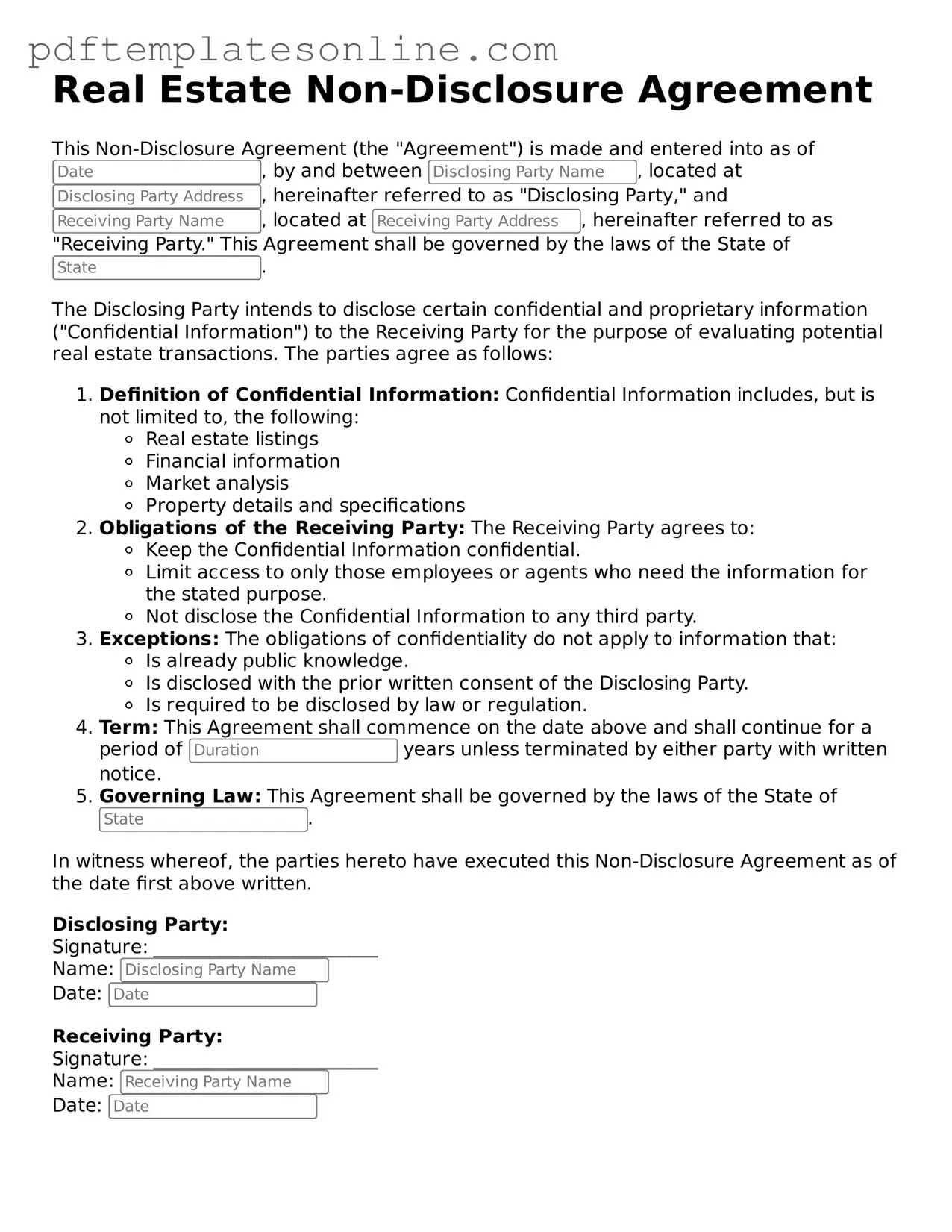Filling out a Real Estate Non-Disclosure Agreement (NDA) can be a straightforward process, yet many individuals make common mistakes that can lead to complications down the line. One prevalent error is failing to include all necessary parties in the agreement. It’s essential to identify everyone involved in the transaction clearly. Omitting a party can create confusion and potentially invalidate the agreement.
Another frequent mistake is not specifying the scope of the confidential information. Parties often assume that the NDA covers all relevant details without explicitly stating what those details are. This ambiguity can lead to misunderstandings and disputes regarding what information is protected.
Some individuals neglect to define the duration of the confidentiality obligation. Without a clear timeframe, parties may have different expectations about how long the information must remain confidential. This oversight can result in disagreements and legal challenges in the future.
Additionally, people sometimes overlook the importance of including a clause regarding the consequences of a breach. It’s vital to outline the repercussions for violating the NDA. This not only reinforces the seriousness of the agreement but also provides a clear course of action if a breach occurs.
Another mistake is using vague language. The terms of the NDA should be precise and unambiguous. When language is unclear, it can lead to varied interpretations, which can complicate enforcement. Clear definitions and explicit terms help ensure that all parties understand their obligations.
Some individuals may also fail to consult legal advice before finalizing the NDA. While it may seem unnecessary, having a legal professional review the document can help identify potential issues and ensure that the agreement complies with applicable laws.
Moreover, neglecting to keep a copy of the signed agreement is a common oversight. All parties should retain a copy for their records. This is crucial for reference and enforcement should any disputes arise.
Lastly, many people rush through the signing process. It’s important to take the time to read and understand the entire agreement before signing. Rushing can lead to signing an agreement that doesn’t fully protect one’s interests.
